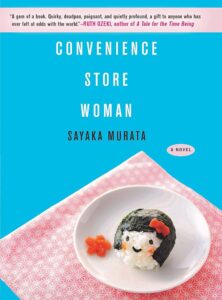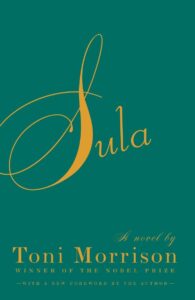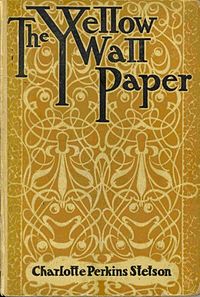There are so many female archetypes in literature—the femme fatale, the damsel in distress, the angel of the house. While I was writing my novel The Wayside, I was thinking a lot about (and mindfully avoiding) one trope in particular: the madwoman. Alternately an object of fear and pity, the madwoman is often erratic, occasionally violent, and usually stowed away unseen, haunting the edges of the story until some climactic moment of confrontation with the hero. She’s a foil for the pure of heart.
In The Wayside, Kate Cleary’s twenty-year-old son, Jake, is found dead in a ravine at the bottom of a cliff. It’s initially unclear whether Jake’s death was accidental or intentional. But even after Kate finds Jake’s suicide note and the authorities declare the case closed, Kate instinctually believes that something more sinister is at play. She commits herself to uncovering exactly what happened during her son’s final days, despite almost every person in her life insisting that she’s wrong to rock the boat. Spoiler alert: In the end, it turns out Kate was right not to take the situation at face value.
As I wrote Kate’s spiral into obsession, I was mindful not to tip into caricature. I wanted her to present as unhinged to the outside world, but to make clear that she wasn’t coming undone for the drama of it all. She was unraveling because what she knew to be right was not aligning with the story everyone else was telling. That made me want to take a more critical look at the madwoman trope in literature. In the words of yet another archetypal female character (sorry, Carrie Bradshaw), I couldn’t help but wonder: Are these women crazy, or are they just being gaslit?
Often when this trope appears in classic lit, the author expects the reader to scorn or pity the character’s behavior even when she’s put through the trauma wringer—which is usually the source or trigger of that behavior in the first place. The easiest place to start is with Jane Eyre’s Bertha Rochester, the originator of the madwoman as we’ve come to know it. Bertha’s husband brought her to a new country, locked her in a room when she exhibited “a violent and unreasonable temper” (his words, not hers), then proceeded to hold her hostage while he went on to marry another woman. Although Bertha has come down to us as an unsympathetic monster, modern readers are likely hip to the fact that it’s actually Rochester who is the monster—though, as the hero afforded more time and attention, more sympathetic on the page. Think also of Hamlet’s Ophelia, defenseless against the whims of a mercurial maybe-lover who eventually kills her father. How about Wilkie Collins’ titular “Woman in White,” a poor young woman locked up in an asylum for accidentally harboring a secret that poses a threat to her kidnapper? When we lift the hood on these characters, we can see that their behavior is actually pretty logical, considering that their circumstances offer no productive recourse.
But the archetype has evolved to become more complex, as in the case of the characters below. In all these instances, these characters are chronically misunderstood and villainized for acting or believing differently. In the hands of another writer (and perhaps written in a different era), they could be boiled down to crazy and used for shock value. Instead, these women wield their differences in perspective with agency, and in the end, they’re proven right to disagree with the people in power.
Here are six of my favorite female characters that defy traditional archetypes.

Death in Her Hands by Ottessa Moshfegh
Moshfegh arguably put the modern iteration of the “unhinged woman” trope on the map with My Year of Rest and Relaxation. But I think her 2020 novel Death in Her Hands hews more closely to the traditional madwoman trope and turns it on its head; it’s a total embodiment of the psyche of a woman obsessed. Vesta Gul (an appropriately ghoulish moniker) is a 72-year-old widow who lives alone in a rural cabin. While walking her dog through the woods, she comes across a handwritten note reading: “Her name was Magda. Nobody will ever know who killed her. It wasn’t me. Here is her dead body.” But there’s no body.
Thus begins Vesta’s feverish attempt to figure out who Magda was and who killed her, mainly through the use of her increasingly elaborate and paranoiac imagination. Though this is ostensibly a murder mystery, thriller readers might be frustrated by its lack of a traditional plot. Instead, this is a rigorously voice-driven and atmospheric portrait of a lonely person seeking purpose. You get the sense that Moshfegh wormed her way into Vesta’s mind, sank in the hook, and is now dragging us along to the very darkest corners of her imagination—which, ultimately, is proven to be just as “real” as any other subjective reality.

Drive Your Plow Over the Bones of the Dead by Olga Tokarczuk
Tokarczuk walked so Moshfegh could run. Drive Your Plow (which was first published in its original Polish in 2009, then translated by Antonia Lloyd-Jones and re-released in 2019) follows Janina, a 70-something retired bridge engineer who devotes her days to astrology, translating William Blake, and acting as an off-season caretaker for the summer cottages in her isolated village near the Czech border. When the neighborhood’s colorful cast of characters keep turning up dead, Janina takes it upon herself to solve the murders. A staunch vegetarian and protector of animal rights, she begins to believe the local wildlife are imparting vengeance upon those who hunt them for sport.
Death in Her Hands and Drive Your Plow draw a lot of similarities, and some of those similarities run deeper than the conceit. Like Death in Her Hands, I read this less as a murder mystery and more as a characterological study on a type that’s often overlooked or misunderstood in culture—the eccentric older woman with radical ideas. Though the setting is contemporary, it has a distinctly folkloric quality to it, helped along by Janina’s stylistic tendency to capitalize improper nouns (Catastrophe, Ailments, Dusk). If not for mentions of phones and laptops, you get the sense that this could be a diaristic account of a 17th-century witch hunt, told from the perspective of the accused woman. Because this is, in fact, proven to be a kind of modern witch hunt: Of course the coterie of powerful men that run the town are threatened by the older woman who fights vigilantly on behalf of the animals—which puts a damper on their favorite pastime of game hunting. Darkly funny, earnest, and, yes, a little kooky, Janina has become one of my favorite characters in contemporary literature.

Generation Loss by Elizabeth Hand
With Generation Loss, Elizabeth Hand introduced the world to one of the great literary anti-heroes. Decades after Cass Neary’s seminal photography book on the ‘70s punk scene earned her cult fame, she hasn’t managed to produce any work of note. With no other prospects, she takes the opportunity to interview an infamous, reclusive photographer holed up on a remote island in Maine—also the site of a former commune where people continue to go missing. There she discovers a world of terror, by turns bleak, phantasmagoric, and punctuated with the kind of body horror you’d see in a ‘70s B-movie. Her experience strains her grip on reality, but she emerges Pyrrhically victorious.
Cass is the definition of an “unlikable” character. She’s gnarly, nihilistic, and makes confusing decisions driven purely by the strength of her will. As a true punk rocker, she sees what the mainstream doesn’t—she zeroes in on the blind spots and is relentless in her pursuit to uncover them. Such is the beauty of a character with absolutely nothing to lose. I think a lot of readers bristle against her, and her self-destructive behavior is sometimes hard to read. That said, there’s no question that if Cass were a man her self-destructive behavior would be glamorized as a bad boy just doing his bad-boy schtick.

Convenience Store Woman by Sayaka Murata
36-year-old Keiko has worked at the same convenience store for her entire adult life, and she finds great pleasure in the orderliness of her work and pride in the mastery over her small domain. But with no greater professional ambition or interest in pursuing romantic relationships, the world treats her as a misfit. Though it’s not stated explicitly in the text, it is apparent to many readers (including this one) that Keiko is on the autism spectrum. Her possible neurodivergence offers her a kind of infrared perspective on social conventions, revealing them to be little more than an illusion. But Keiko reaches an inflection point when social pressure explodes the mindset that had kept her in relative peace, and she allows her incel-coded coworker to live with her in order to achieve the appearance of conformity. While I’m loath to boil down this book to a single “moral of the story,” I do consider it a cautionary tale against sacrificing one’s uniqueness for some conventionally received truth that ultimately causes one harm. In other words: Let your freak flag fly. It’s probably not as freaky as people tell you it is.

Sula by Toni Morrison
Sula is a great example of how women freed from social and sexual constraints are often considered “crazy.” From childhood, Sula followed her own rules of civility—in one early scene, she slices off the tip of her own finger to intimidate a gang of four white brothers who threaten to assault Sula and her friend, Nel, who are both Black. But is the act crazy if it’s done in an attempt to preserve oneself in a dangerous world?
Sula would continue in this vein through the end of her life. Later, her affairs with men (particularly married and/or white men) would earn her the fear and scorn of her neighbors, who would use her as a scapegoat for their myriad concerns. But Sula is neither evil nor crazy in Morrison’s estimation, and she’s also not a hero cloaked in the glamour of misunderstanding. The truth of Sula’s character is much more complex than that. After experiencing two major traumas as a child, Morrison writes that she was left with “no greed, no desire to command attention or compliments—no ego.” Social niceties dissolved. Instead, she lived in pursuit of her own pleasure, both receiving it and giving it; it was only when she asserted herself in sex that she felt her power return to her. This resistance to conformity made her hard to live with in the tight-knit community of Bottom, Ohio.
But Morrison offers another, intriguing justification for Sula’s behavior: she has the soul of an artist, but no outlet for it. “[H]ad she anything to engage her tremendous curiosity and her gift for metaphor, she might have exchanged the restlessness and preoccupation with whim for an activity that provided her with all she yearned for,” Morrison writes. “And like any artist with no form, she became dangerous.” If you’ve ever known a creative type in a rut, you’ll know what Morrison is referring to.

The Yellow Wallpaper by Charlotte Perkins Gilman
The unnamed narrator in Charlotte Perkins Gilman’s short story is a classic example of the “madwoman in the attic” trope. But 132 years after the story’s publication, I’d venture to say that some aspect of the text will resonate with most women—whether it’s the quack-doctor husband who wrests control over the unnamed narrator’s (already-limited) choices, the protagonist’s increasingly frantic need to escape confinement, or the medical field’s prompt dismissal of women’s physical and psychic pain, particularly as it pertains to postpartum. “I am getting angry enough to do something desperate,” the narrator writes toward the end of the story. As a woman in 2024, that line still hits.
***


















